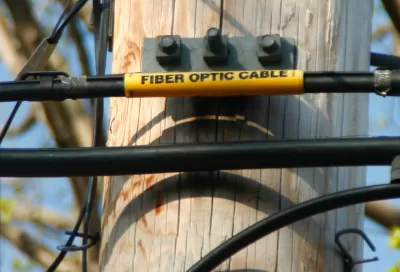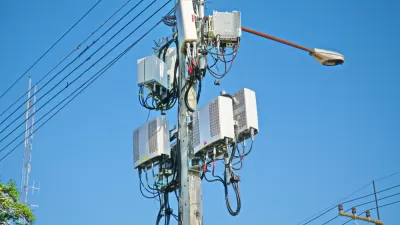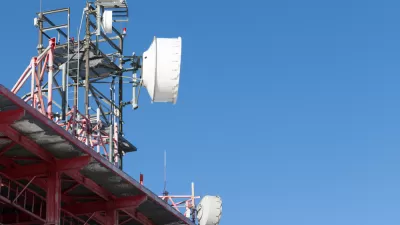Accessing the internet is too expensive for many, not just in rural areas but also in cities.

Expensive internet is not just a rural problem. "The Bronx has only 35.3 percent access, and Manhattan fares only slightly better with 35.6 percent access; Clark County, Nevada, home to Las Vegas, has 39.1 percent access," Clare Malone writes for FiveThirtyEight. The fact that in much of America less than half the population has access to the internet at home is an issue of equity, "Without that knowledge and exposure, a person is likely to be further marginalized in economic and educational opportunities, caught in a cycle of literal and metaphorical disconnection," Malone writes.
Cities are looking for ways to make the internet more affordable for their citizens, but it's difficult to bring down prices in an industry where companies like Comcast and AT&T face so little competition. Still, cities like Washington, D.C. are implementing programs to reach out to those who may not be online. "The Connect.DC initiative works to provide computer courses and subsidize internet access and devices in order to bridge a divide that many worry holds back a skills-based economy and diminishes the opportunities of significant parts of society," Malone reports.
FULL STORY: Lots Of People In Cities Still Can’t Afford Broadband

Study: Maui’s Plan to Convert Vacation Rentals to Long-Term Housing Could Cause Nearly $1 Billion Economic Loss
The plan would reduce visitor accommodation by 25,% resulting in 1,900 jobs lost.

North Texas Transit Leaders Tout Benefits of TOD for Growing Region
At a summit focused on transit-oriented development, policymakers discussed how North Texas’ expanded light rail system can serve as a tool for economic growth.

Why Should We Subsidize Public Transportation?
Many public transit agencies face financial stress due to rising costs, declining fare revenue, and declining subsidies. Transit advocates must provide a strong business case for increasing public transit funding.

How to Make US Trains Faster
Changes to boarding platforms and a switch to electric trains could improve U.S. passenger rail service without the added cost of high-speed rail.

Columbia’s Revitalized ‘Loop’ Is a Hub for Local Entrepreneurs
A focus on small businesses is helping a commercial corridor in Columbia, Missouri thrive.

Invasive Insect Threatens Minnesota’s Ash Forests
The Emerald Ash Borer is a rapidly spreading invasive pest threatening Minnesota’s ash trees, and homeowners are encouraged to plant diverse replacement species, avoid moving ash firewood, and monitor for signs of infestation.
Urban Design for Planners 1: Software Tools
This six-course series explores essential urban design concepts using open source software and equips planners with the tools they need to participate fully in the urban design process.
Planning for Universal Design
Learn the tools for implementing Universal Design in planning regulations.
City of Santa Clarita
Ascent Environmental
Institute for Housing and Urban Development Studies (IHS)
City of Grandview
Harvard GSD Executive Education
Toledo-Lucas County Plan Commissions
Salt Lake City
NYU Wagner Graduate School of Public Service





























